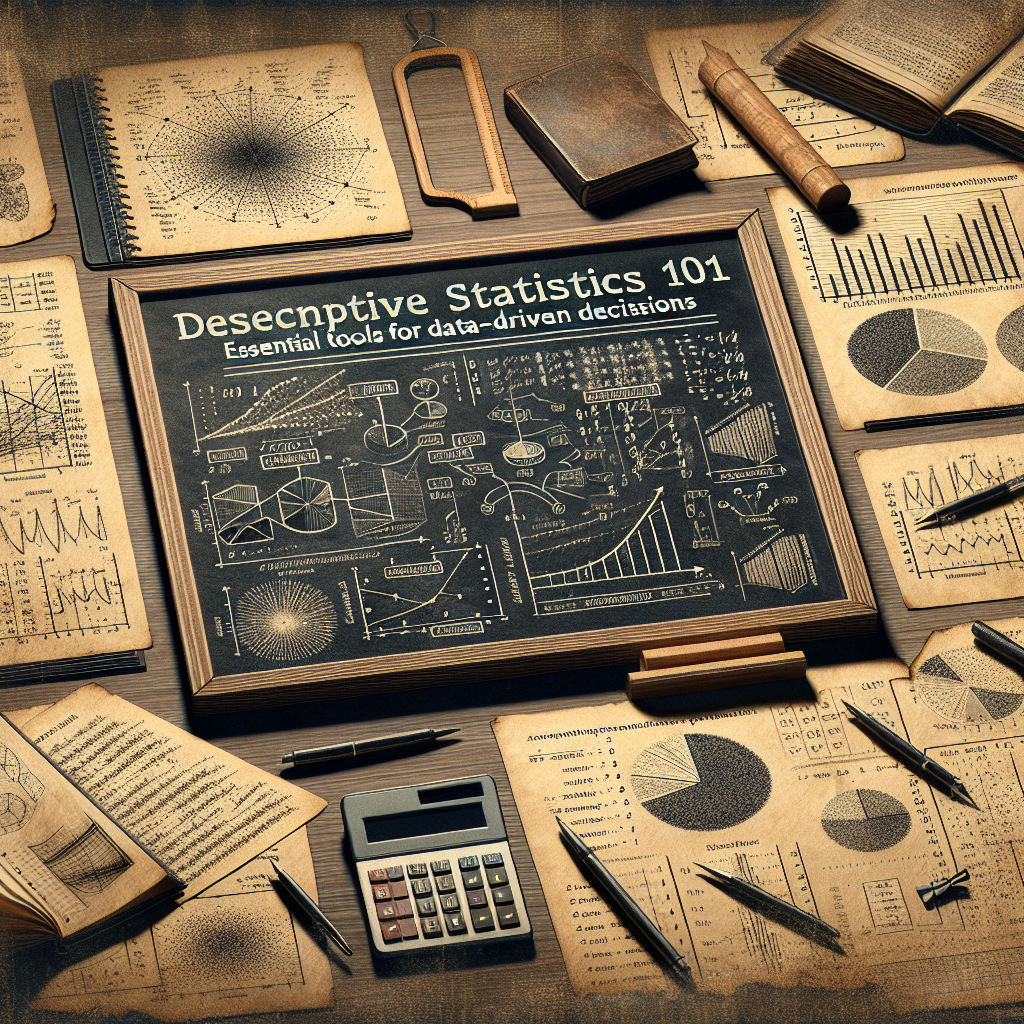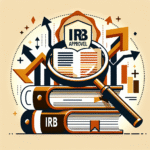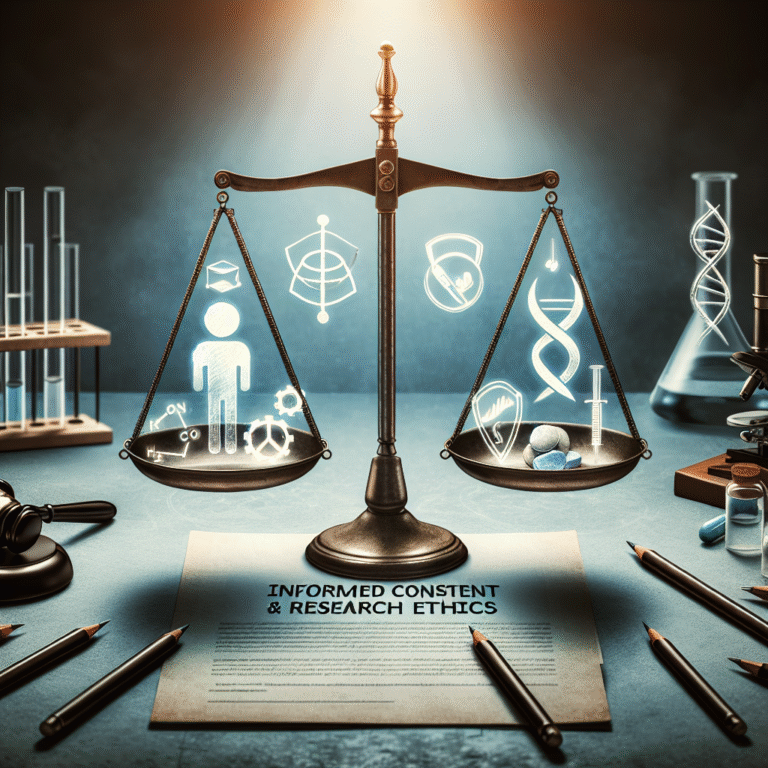
In the rapidly evolving landscape of data analysis, few concepts are as vital yet often overlooked as descriptive statistics. Whether you’re a business owner striving for growth, a researcher seeking to uncover insights, or a data analyst aiming to tell compelling stories with numbers, mastering this foundational aspect of statistics is crucial. Descriptive Statistics 101: Essential Tools for Data-Driven Decisions is not just a course title—it’s a gateway to understanding and leveraging data effectively.
The Essentials of Descriptive Statistics
Descriptive statistics provide a straightforward framework for summarizing and interpreting data. Unlike inferential statistics, which attempt to draw conclusions beyond the immediate data at hand, descriptive statistics aim to present a clear picture of what the data is telling us. By understanding these essentials, organizations can make informed decisions that drive success.
Types of Descriptive Statistics
Descriptive statistics can be broadly split into three categories: measures of central tendency, measures of variability, and measures of distribution.
1. Measures of Central Tendency
The most common measures of central tendency are the mean, median, and mode:
- Mean: The arithmetic average, calculated by adding all the numbers together and dividing by the count of numbers.
- Median: The middle value when numbers are arranged in order, providing insight into the dataset without the influence of outliers.
- Mode: The value that appears most frequently in a dataset, particularly useful for categorical data.
Case Study: A tech startup analyzing customer satisfaction ratings finds that the mean score is 8.5, but the median is 7.0. This discrepancy indicates that a few customers rated their experience very poorly, which could warrant specific attention.
2. Measures of Variability
Understanding variability is critical in data analysis. Common measures include:
- Range: The difference between the highest and lowest values, reflecting the extent of variation.
- Variance: The average of the squared differences from the mean, demonstrating how far each number in the dataset is from the average.
- Standard Deviation: The square root of the variance, it measures the dispersion around the mean in the same units as the data.
Table 1: Summary of Descriptive Statistics
| Statistic | Description |
|---|---|
| Mean | Average value |
| Median | Middle value |
| Mode | Most frequent value |
| Range | Max – Min |
| Variance | Measure of data spread |
| Standard Deviation | Measure of average distance from the mean |
Case Study: A clothing retailer analyzes the sales figures of different sizes across multiple stores and finds a high standard deviation in one size category, indicating significant demand variability across locations. This prompts inventory adjustments tailored to regional preferences.
3. Measures of Distribution
These measures help identify the shape and spread of the data, critical in decision-making:
- Skewness: Describes the asymmetry of the distribution. Positive skew indicates a longer tail on the right; negative skew indicates a long tail on the left.
- Kurtosis: Measures the "tailedness" of the distribution. High kurtosis indicates a distribution with heavy tails and sharp peaks, which may signal risk.
Visual Aid: Including histograms or box plots can be incredibly illuminating. For example, in a histogram showing customer purchase frequencies, a bimodal distribution may appear, indicating two distinct customer groups.
Application in the Real World
Descriptive statistics aren’t just theoretical. Businesses across industries use these tools every day to glean insights and inform decisions.
Case Study 1: E-Commerce Trends
An online retail giant used descriptive statistics to analyze their sales data during holiday seasons. By calculating the mean purchase value and the various measures of dispersion, they discovered not only which products sold best but also how customer purchase behavior varied significantly depending on geographical factors. This allowed them to fine-tune marketing campaigns, tailor inventory distribution, and enhance customer engagement strategies effectively.
Case Study 2: Health Sector Analysis
In a recent public health study, researchers employed descriptive statistics to analyze the spread of a flu virus across different cities. By summarizing infection rates (mean and median) and the variability of cases (standard deviation), they identified hotspots requiring immediate intervention. This helped local governments mobilize resources quickly and efficiently.
Visual Tools in Descriptive Statistics
Visual aids enhance the interpretability of descriptive statistics. Tools like bar charts, pie charts, and scatter plots can offer quick insights that raw numbers might obscure.
- Bar Charts: Useful for comparing categories.
- Pie Charts: Best for showing proportions.
- Box Plots: Ideal for highlighting distribution and identifying outliers.
Table 2: Examples of Visual Tools
| Tool | Best Used For |
|---|---|
| Bar Chart | Comparing different categories |
| Pie Chart | Showing part-to-whole relationships |
| Box Plot | Summarizing a dataset and spotting outliers |
Leveraging Descriptive Statistics for Data-Driven Decisions
Understanding descriptive statistics isn’t merely an academic exercise; it can fundamentally transform how organizations operate. By applying these principles, businesses can streamline processes, optimize marketing strategies, and enhance customer experiences.
Creating a Data Culture
Organizations that harness the power of data through descriptive statistics position themselves for long-term success. By fostering a data culture—where employees at all levels understand and leverage data—companies can make smarter, evidence-based decisions.
Practical Steps for Implementation
- Training: Invest in training employees to understand and utilize descriptive statistics effectively.
- Data Availability: Ensure that data is easily accessible across departments to promote collaboration and transparency.
- Regular Reviews: Establish regular reviews of descriptive statistical reports to keep everyone informed and engaged with the data.
Conclusion: Make Descriptive Statistics Your Superpower
Descriptive Statistics 101: Essential Tools for Data-Driven Decisions reveals the fundamental tools necessary for interpreting and bolstering business intelligence. By mastering this arsenal of statistics, you can turn data into actionable insights and make informed decisions that drive success.
The importance of descriptive statistics cannot be overstated. They lay the groundwork for sound analysis, allowing organizations to analyze trends and draw meaningful conclusions effectively. The next time you face a decision worthy of statistical scrutiny, remember that descriptive statistics are there to guide you, ensuring your choices are grounded in solid data.
FAQs
1. What are the primary components of descriptive statistics?
The primary components of descriptive statistics include measures of central tendency (mean, median, mode), measures of variability (range, variance, standard deviation), and measures of distribution (skewness and kurtosis).
2. How can I visualize descriptive statistics effectively?
Visualizing descriptive statistics can be done using bar charts, pie charts, scatter plots, and box plots, each serving to present data in an easily digestible format.
3. What role do outliers play in descriptive statistics?
Outliers can heavily skew measures of central tendency and variability, offering insights into unusual observations that may warrant further investigation.
4. How do I apply descriptive statistics in business decisions?
Use descriptive statistics to summarize and analyze sales data, customer feedback, or operational metrics, enabling data-driven insights and strategies that enhance performance.
5. Can descriptive statistics be used for predictive analysis?
While descriptive statistics mainly focus on summarizing data, understanding these statistics lays the groundwork for more complex inferential statistics used in predictive analysis.
By embracing Descriptive Statistics 101: Essential Tools for Data-Driven Decisions, you equip yourself with the knowledge to make smarter, more informed choices that can reshape the future of your organization. Embrace the data-driven future and lets statistics elevate your understanding!
















